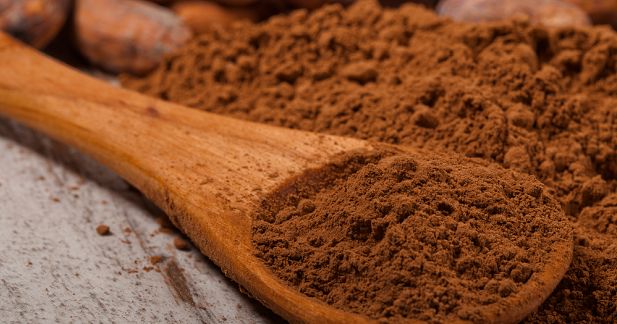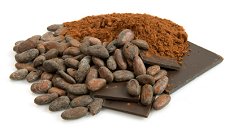Tag Archive: confectionary coating

Cocoa Powder for Dipping
March 25, 2011
I received an interesting question the other day from someone on my mailing list.
(If you're reading this, but not on my list, go ahead and get my free ebook, then I will also send you more chocolate information and you'll have a chance to ask me a question too.)
Anyway, here is the question posed:
Wax in Your Chocolate?
January 13, 2011
No, do not add wax to your chocolate!
It seems like I give tempering advice all the time. And I know why. Tempering chocolate should be easy, but it isn’t. And when struggling, people do one of two things: seek advice or look for ways to cheat.
Tempering is just one of those things that takes a lot of practice, and you have to be willing to learn from your mistakes.
If you are making chocolate-dipped candies and have trouble with the tempering process, you may be tempted to put paraffin or baker's wax into your coating to help it set.
Read more
Pure Chocolate?
November 26, 2010
As reported by the Associated Press from Brussels, at least according to the high court of the European Union, there is no such thing as pure chocolate!
In Europe, unlike in the United States, chocolate can contain other vegetable oils and still be called chocolate. Chocolate makers in some of the European countries typically include other oils, whereas some only use cocoa butter.
Most notably Italian law permitted the use of "pure chocolate" as a designation, contrary to the 1999 legislation where all EU nations agreed that the label would make clear whether the chocolate contained cocoa butter and/or other oils.
Read more
Halloween Bark!
October 20, 2010
Almond Bark or candy bark is a thin confectionery coating usually made with nuts and added flavors (like peppermint or vanilla) and/or added colors. The “bark” can be sold in blocks or discs for home candy making and dipping. This is not “real” chocolate, but a confection commonly used in place of real chocolate because it hardens without having to temper it first.
The term bark is typically associated with confectionery coating, but I have seen chocolate bark being sold, especially around holidays. I think that regardless of which type of coating the bark is made from, the common factor is that the final product resembles bark on a tree; thin and bumpy.
Read more
Thinning Out Candy Coating
October 3, 2010
You have some choices when it comes to molding and dipping using chocolate coatings.
There are chocolate-flavored confectionery coatings and there are what is commonly referred to as “real” chocolate coating or “pure” chocolate coatings.
The main difference between these two types of coating is the fat system. Confectionery coatings are made with vegetable fats and oils like palm kernel, soybean, or a blend of similar kinds. Chocolate coating is made with cocoa butter. These coatings behave very differently because of the type of fat in them.
Read more
The Secret (and Science) of Ice Cream Coatings
September 2, 2010
There are two basic types of chocolate ice cream coatings, “real” chocolate coatings and chocolate flavored compound or confectionery coatings.
Both types of coatings must be thin enough to cover and bend over the ice cream, thick enough not to crack open and let the ice cream seep through, and simultaneously be crunchy and melt in your mouth. That’s not asking too much, is it?
Most of these demands have to be met by the fat system used in the coating.
Read more
Chocolate Definitions
October 29, 2009
Confusion in the world of chocolate?
You might think, "there’s nothing confusing about chocolate -- you buy it, you eat it!" The reality is, the chocolate world has its own lingo, with terms and definitions that apply to the tasting of chocolate, the baking and cooking of chocolate, and the making of chocolate confections.

Read more

